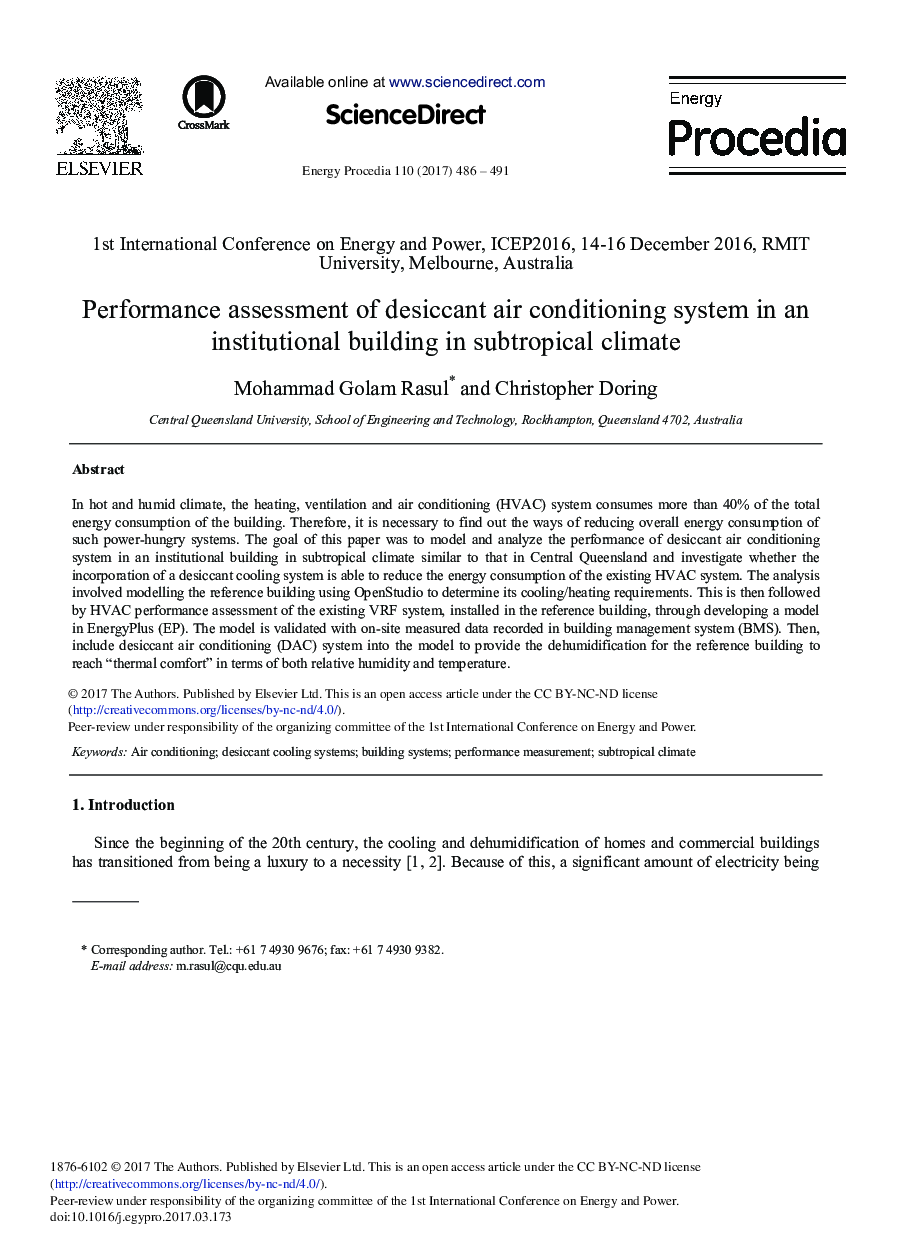| Article ID | Journal | Published Year | Pages | File Type |
|---|---|---|---|---|
| 5445772 | Energy Procedia | 2017 | 6 Pages |
Abstract
In hot and humid climate, the heating, ventilation and air conditioning (HVAC) system consumes more than 40% of the total energy consumption of the building. Therefore, it is necessary to find out the ways of reducing overall energy consumption of such power-hungry systems. The goal of this paper was to model and analyze the performance of desiccant air conditioning system in an institutional building in subtropical climate similar to that in Central Queensland and investigate whether the incorporation of a desiccant cooling system is able to reduce the energy consumption of the existing HVAC system. The analysis involved modelling the reference building using OpenStudio to determine its cooling/heating requirements. This is then followed by HVAC performance assessment of the existing VRF system, installed in the reference building, through developing a model in EnergyPlus (EP). The model is validated with on-site measured data recorded in building management system (BMS). Then, include desiccant air conditioning (DAC) system into the model to provide the dehumidification for the reference building to reach “thermal comfort” in terms of both relative humidity and temperature.
Related Topics
Physical Sciences and Engineering
Energy
Energy (General)
Authors
Mohammad Golam Rasul, Christopher Doring,
